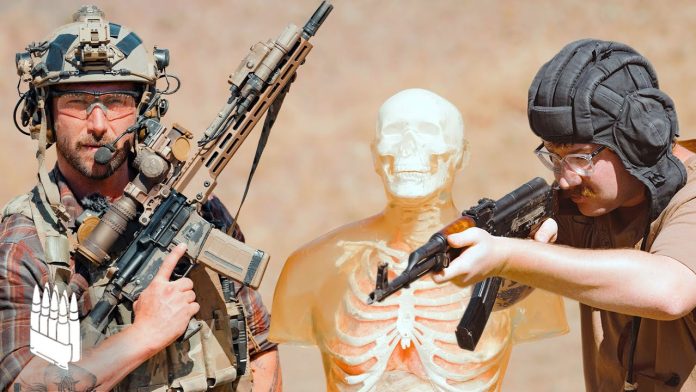
I was having this discussion yesterday with a friend. How do rifle rounds wound compared to pistol rounds and why are the wounds so different?
The short and oversimplified answer is also the simplest starting point.
Physics.
Several layered physical mechanics produce the dramatic differences we see from low velocity high mass pistol rounds to the lower mass high velocity rifle rounds. There are also fairly dramatic performance differences within certain criteria rifle round to rifle round.
Some basics and caveats if you don’t want to watch the 24 minutes and change of footage right now.
Any intermediate caliber rifle is going to deliver significantly more disruptive and damaging energy onto the target than a pistol caliber round.
Where hollow points are king in handguns, due to the physics of the lower velocity rounds, the rifle rounds don’t necessarily need a hollow point or soft point to boost their potential. That said, rounds meant to work best for your particular threat model are still preferred. If you are home defending for example, threat matrix of close unarmored invaders, soft points/expanding rounds like Gold Dots or Hornady Critical Defense are going to be safer and more effective. But even basic FMJ from either rifle is well above the lethally disruptive threshold if you cannot pick up or do not have access to better ammunition.
Is tumbling good?
Yes. It enhances the delivery of energy onto the target.
Why does the 5.56 tumble better than larger and heavier rounds.
Again, physics. The 5.56 is a long and narrow round. All the mass is contained behind a very small tip and a small surface area so as that tip interacts with the medium change of body, wall, windshield, etc. the energy contained behind it the majority of the round’s mass will start to overtake and pass the tip taking the path of least resistance. It will tumble.
With larger rounds that are shorter, like 7.62×39, the mass is more evenly distributed behind the tip, it is closer to the tip, and it more widely distributed from the tip. What all that means is that when the tip of the round starts to change mediums the energy behind it is more evenly and more widely distributed so the tendency of the round to keep moving forward as the path of least resistance is greater.
These physics matter in the selective since that you can projectile and performance optimize for the threat you are trying to deal with. These physics don’t matter as much in the larger open world macro sense since a rifle round at close distance has no non-destructive way to pass into and through a body with magnitudes more energy than any pistol hollow point.
Science!
Here is the video starting at the torso dummy testing.



